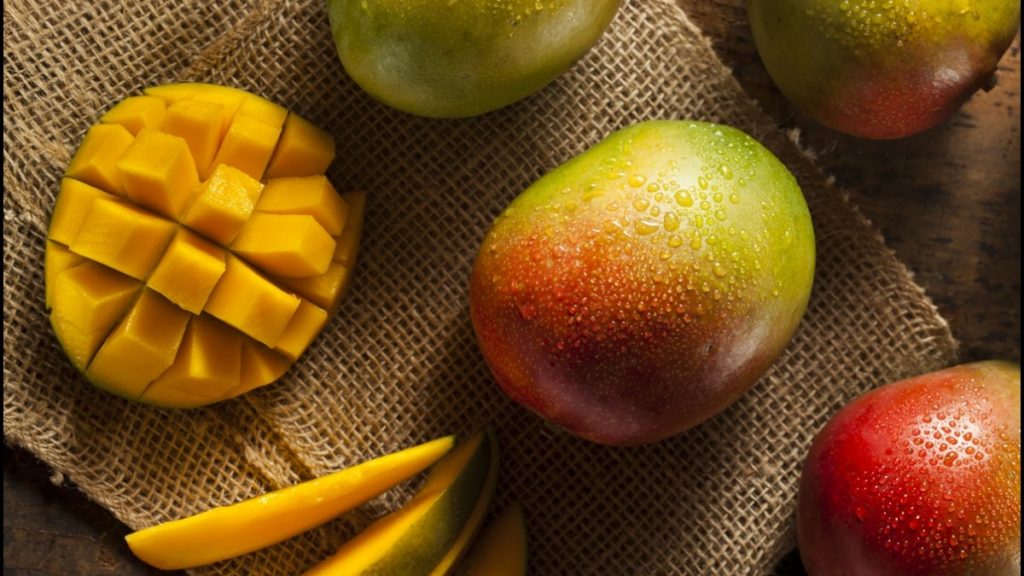This is the age of miracles and wonders. Like being able to eat fresh mangos when you live in Southeast Alaska. Whenever I start bemoaning the horrors of modern life, I remind myself that there is a lot good about living in these times and in this place. If our ancestors could see how we live, they would probably think we are spoiled beyond belief.
On a blustery Southeast Alaska day, eating a perfectly ripe mango is like being transported to a tropical clime where balmy breezes blow. The soft, succulent flesh with its perfect balance of sweetness and tartness nearly melts in your mouth. No wonder many people refer to mangos as the king of fruits.
Finding a perfectly ripe mango is easy if you live in the tropics. Here in Alaska it is a little trickier, but it can be done. The time to look for them is right about now: they are best from early spring until early summer. Food maven Alice Waters says that the senses of smell and touch are vital when selecting mangos.
According to Waters, a ripe mango: “should have a mild, fruity aroma, especially at the stem end, and should yield to gentle pressure, like a ripe peach….Color is not a reliable guide. The skin of many varieties develops a yellow or golden background color as the fruit ripens, but the skin of others stays green even when the mango is fully ripe.”
There are many different varieties of mangos grown, but you will only see a few of these in our local grocery stores. The most common is the Tommy Atkins. It is a beautiful, large mango whose green skin is often tinged with red and gold. Ataulfo is a smaller, kidney shaped mango with a yellow skin. It is very sweet with a smooth buttery flesh, and is my personal favorite. Kent mangos are available later in the season, mid to late summer. They have a green skin with a yellow and red blush and excellent flavor.
Mangos are a superior source of vitamins A and C and are also considered a good source of potassium. Interestingly, mangos are a botanical relative of poison ivy and poison oak and contain a toxic resin called urushiol, mostly in the peel. As long as you choose mature fruit, and peel it, this shouldn’t be a problem for most folks, although occasionally people experience skin eruptions when they eat too many mangos
Firm mangos can be ripened at room temperature in a paper bag. When they give a little to the touch, they are ready to eat. At this point, they can be stored in the refrigerator for a few days. If you are eating them by themselves, they taste best at room temperature. When they are still green, mangos can be used to make spicy chutneys and relishes. Ripe mangos are often paired with seafood.
They can also be used to make a delicious salsa. Here is a recipe for a killer black bean and mango salsa:
Black Bean and Mango Salsa
2 cups cooled or canned black beans
2 large, or 3 medium sized mangos, peeled, pitted and chopped
1 can diced or crushed pineapple, including juice
1 red or green bell pepper, diced small
1 red onion, diced small
2 tablespoons lime juice
1 cup chopped cilantro
2 tablespoons minced hot chili pepper
Salt to tasteCombine ingredients in a large bowl, mixing well. For best flavor, refrigerate for a few hours or overnight. This salsa will keep, covered and refrigerated, for 4 or 5 days.


